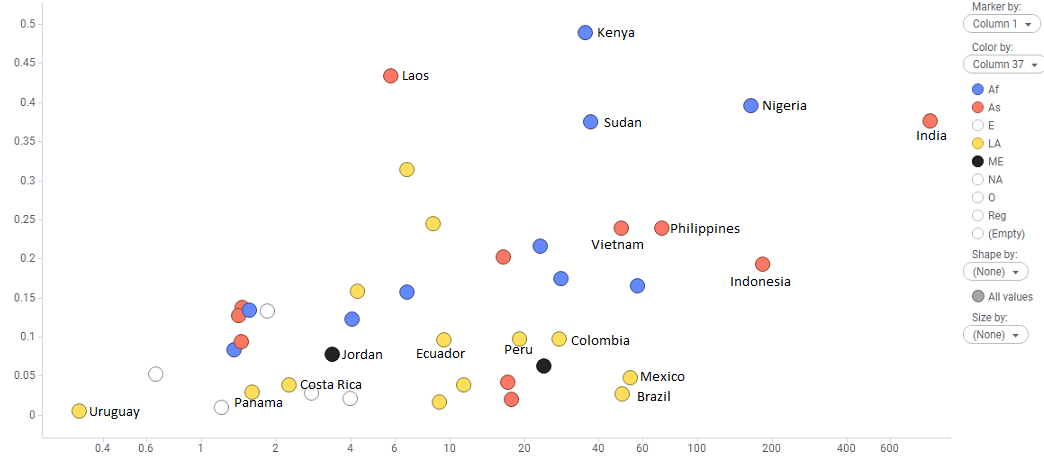
29 Dec 2023
Toward Data Center Sustainability, and Beyond
Data center operators are concerned about sustainability. There was virtual unanimity among audience members during an IDCA webinar on Sustainability that sustainability was “important” to some degree. Yet only 27% of webinar participants said their companies had a formal commitment to CO2 and related emissions abatement.
Within that context, a practical mindset seemed to be present among most IDCA Research survey participants in 2023, with 65% saying a “complete migration to the cloud” is not essential in creating sustainable Digital Economies.
Trying to determine relative operational metrics – and therefore, emissions levels – among the use of cloud platforms, colos, and the large percentage of continued on-premises operations looks to be perhaps an impossible task at this point. The best that operators can do today is devote efforts to their own use of sustainable energy and on-site emissions-averse processes, whether on-prem or in colos, and trust that cloud vendors are doing the same.
As far as their own operations, 48% of survey respondents mentioned financial constraints as the “biggest challenge” in building sustainable infrastructure, with 41% noting a lack of stakeholder commitment and only 7% citing regulatory hurdles.
Beyond the Digital Infrastructure
Any thoughts about data center sustainability will be a subset of sustainable power discussions in general. This is the big picture.
In that spirit, IDCA Research examines the sustainable electricity grids among 148 nations, and has developed a formula to determine the Emissions Reduction Challenge (ERC) facing each of these nations. Sustainable electricity grids run the gamut from almost non-existent to 100%, with a world average of 27.7% (which is in line with figures from other organizations who measure this).
Significantly, we do not include nuclear power as a component of sustainable electricity. In 2024 and beyond, we will need to factor it into our research and rankings now that COP28 attendees have blessed nuclear as a fossil-fuel replacement.
If You Have to Ask the Price...
IDCA Research has also developed an analysis of what percentage of a nation's GDP will be required as an investment to bring its overall power grid up to 25% and 40% of the developed-world standard. This analysis shows the arbitrary nature of many of the world's borders and the base unfairness of life, if this may be cast in such philosophical terms.
For example, the nation of Burundi has one of the world's lowest income levels (at a nominal $265 annually per person), and one of the weakest electrical grids as well. The nation's electricity resources serve its 12 million people with 0.5% of the electricity per person enjoyed by the developed world. This amounts to 35 kilowatt hours per year, an amount consumed in less than two days in developed-world nations.
Although the investment required to build a fully sustainable grid that would bring Burundi's service up to 25% of the developed world standard would require only $4.4 billion, this amount is 135% of the nation's entire nominal GDP (ie, economy). Bringing the nation's grid to 40% of the developed-world standard would require an investment equalling 219% of the nation's GDP.
The Big Counter-Example
These scenarios seem highly unlikely, even as neighboring Rwanda is almost equally impoverishd, yet has drawn attention to recent economic dynamism (including by IDCA Research) that drops the respective investment requirements there to 44% and 71% of its economy to achieve 25% and 40% of the developed-world standard, respectively.
Another extreme case can be found with India. The now-most populous nation in the world, with 1.4 billion people (more or less), India's efforts over the past two decades to lift itself economically are well-known and gargantuan. Yet it still only has a per-person income level of slightly more than $2,000 per person, placing it in the Frontier Markets income tier, the second-lowest of five income tiers IDCA Research uses.
India now requires only 5.3% of its GDP to build a sustainable grid equal to 25% of the developed-world level, and 15.7% to reach the 40% level. But given its massive population, this translates to $156 billion and $463 billion, respectively. The relative challenge here seems to trump the absolute challenge, that is, India is likely considered a better investment bet than Rwanda, let alone Burundi, by dint of its seemingly modest upgrade requirements.
India also faces a massive emissions reduction challenge, being the third-largest producer of CO2 and other GHG emissions, and operating with an economic efficiency relative to its emissions that is 20% of the US and even less than that of the EU.
The Big Picture in Context
Whether discussing Burundi, Rwanda, India or anywhere else, it's also obvious that no one will simply invest in sustainable electricity in a vacuum.
Who and where are the industrial and other business customers that will use all this newly generated power? Where is the physical infrastruture to support the new businesses? Who is building the digital infrastructure to modernize the economy, and what is its cost? How will consumers afford more than they are using now? And, at the root cause of all economic considerations, how does one go about building a big, new economy quickly without triggering inflation, new income inequity, and social upheaval even in nations that may seem to be in need of some upheaving?
Follow us on social media:


.d57b427b.png&w=3840&q=75)

















